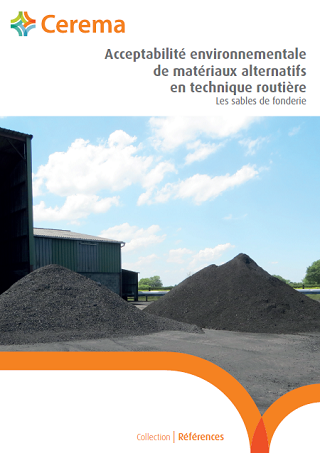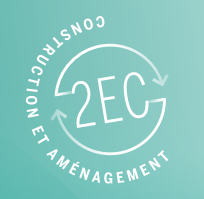
The construction and development sector has an important role to play in the development of a circular economy. This success starts at the design stage, and continues via the drafting of the tender and the choice of materials.
In a logic of economizing natural resources and in order to be part of a recycling society, guidelines have been defined at the national level prioritizing the prevention of production and recycling of waste.
Recovering 70% of waste: the key role of the client of the work

In the building and public works sector, it is required to sector, it is required to achieve a material recovery of of 70% of waste by 2020 (Environment Code, art. L.541-1).
In addition, from 2020 onwards, at least 60% by mass of all materials used during the year year in the construction sites of the State and local authorities must be derived from the reuse or recycling of waste (Law no. 2015-992 of August 17, 2015 on the transition for green growth, art. 79).
To meet these objectives, the client responsible for the prevention and management of waste for the prevention and management of waste generated by its worksites, must study the possibilities of reuse, recovery and recycling of waste and recycling of alternative materials from waste and thus, to take an active part in the implementation of a circular economy of materials.
Alternative material, means any material made from non-hazardous waste and intended to be used, alone or in combination with other materials, alternative or not.
To develop the circular economy in construction and development, the commitments of the sponsor of the work include:
- the prevention of waste generated by the project's design choices (e.g. cut/fill balance);
- waste treatment by recycling facilities;
- the systematic consideration of alternative materials materials in the calls for tender for works.
To meet these commitments, the sponsor of the construction and development work must first of all anticipate the prevention and management of design waste.
It must then adapt its works contracts and contracts and, finally, to set up a control of of the requirements during the execution of the work.
To anticipate the prevention and management of waste generated by the building site, it is necessary, upstream of the drafting of the of the works, to know the waste that will be generated. During of the realization of this provisional diagnosis, it is necessary to estimate :
- the typology of waste generated, integrating the resources that can be reused on the site within the framework of the construction site;
- the quantities expressed in tons for each typology, their location on the project perimeter,
- the phasing of waste appearance according to the execution of the project.
The diagnosis will allow the client of the work to to identify the waste that it will be possible to use within the framework of its building site, those which it possible to use on other local building sites or those to be directed towards recycling or other ways of recovery. The deposit in a waste storage facility can only be considered as a last resort to respect the hierarchy of the modes of waste treatment, particularly if the latter are not in conformity with their environmental assessment.
This objective of the sponsor of the work in terms of of waste prevention and management must be specified in its calls for tender. The companies are then obliged to propose solutions to meet this objective, preferably on local sites.
Traceability of waste

Waste recycling facilities, which are generally ICPEs monitored and controlled by prefectures, are widely listed, in particular by regional prefectures (in the regional quarry plan, SRC), and by regional councils (in the regional plan of prevention and management of waste, PRPGD).
The calls for tender for the works will have to prescribe traceability of waste, from the original construction site to the final and specify the geotechnical performances that the materials must reach according to the desired use, without specifying the type of material, the alternative material can never be rejected for non-technical reasons (performance and environment).
Once the work contract has been awarded, it will be implemented during the construction phase. The origin and quality of alternative materials entering the site will have to be be controlled and the traceability of waste as well.
At the end of the project, it is advisable to perform a balance sheet of the operation by comparing the quantities and the estimated destinations with those actually reused and valorized. These assessments of operations will allow to optimize the management of their waste and the recovery of alternative materials for their future projects.
As for alternative materials, they can be used as long as they respect the performance standards of the call for tenders of the works tender, on the one hand, and the environmental regulatory requirements for implementation on the other hand.
The environmental acceptability of alternative materials
To expand the uses of materials, two new methods are being developed: one on the environmental and health acceptability of alternative materials intended for construction and in the upper part of earthworks under buildings and the other on the environmental acceptability in maritime and river works. These technical documents are intended for project owners and responsible for the use of alternative in their projects. They also make it possible to present to construction companies and industrialists, potential producers of alternative materials, the environmental and health requirements of these materials according to their use.
In addition, these guides also constitute the guidelines to be respected for any explicit removal of waste status, subject to the publication condition of a ministerial order.
In particular, in accordance with the ministerial order of June 4, 2021 setting criteria for the removal of status of waste for excavated soil, sediments and ballast that have been prepared for preparation for use in civil engineering or development, the guides dedicated to these three types of soil provide the environmental standards to be respected.
Thus, the national objectives of circular economy require the consideration, upstream of the projects, of the prevention and management of waste, with priority given to the reuse and treatment of waste in recycling facilities or other other ways of recovery, and then, the use of alternative materials within the construction sites.
Optimizing the recycling of alternative materials is at the heart of the circular economy objective by the public authorities. It also allows the project leader to show his commitment as a responsible stakeholder, to facilitate the social acceptability of its projects in the area and to contribute to the consolidation of our recycling society.
Article written by Agathe Denot, Manager Circular Economy and Resource Preservation of Resources.



